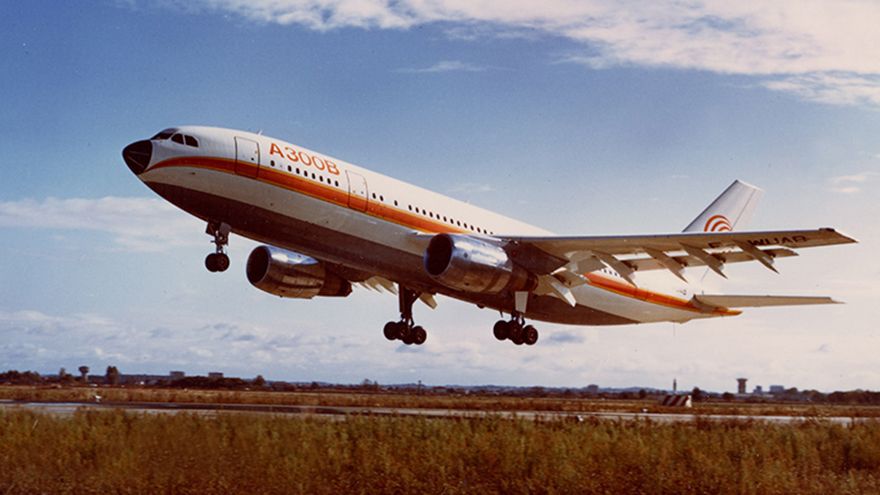
On 28 October 1972, the world’s first twin-engine widebody commercial aircraft, the A300B1 development aircraft, MSN 1, bearing the registration F-WUAB, performed its maiden flight in Toulouse. The flight was initially scheduled for 27 October, but unfavourable weather conditions pushed it back by 24hr; and while the following day brought the risk of wind, the weather was judged sufficiently good for the flight to go ahead.
The flight lasted 1hr 25min, during which a maximum speed of 342.6kph was reached at an altitude of 4,300m. Autopilot was engaged, moving surfaces were tested and landing gear retraction and deployment were performed. Upon return to Blagnac airport, strong wind gusts required a controlled crosswind landing, which was expertly handled by Captain Max Fischl.
The Airbus A300 was the result of a collective European ambition. In the mid-1960s, various studies for a new 250-seat short-to-medium-haul aircraft were being considered by European aircraft manufacturers. The HBN 100 had been in discussion between Hawker Siddeley, Breguet and Nord Aviation, and alternative designs for a similar size aircraft, the Galion, were being considered by Sud Aviation.
Germany’s MBB and VFW, later to collectively become Deutsche Airbus, had also set up a dedicated ‘air bus’ study group; and although European airframers at the time only had around 10% of the global market share, with the remaining 90% going to the three main American manufacturers, by 1966 the studies had evolved into a joint European project.
The French government appointed Sud-Aviation as its partner in the venture, while Deutsche Airbus and Hawker Siddeley would respectively represent Germany and the UK. Engine development was initially trusted to Rolls-Royce, which was to develop the power plants (RB.207) for the new ‘air bus’.
However, the project did not develop as initially anticipated, and at the
1969 Le Bourget Airshow, France and Germany co-launched the A300B programme; and to provide the necessary legal and governance framework for the programme, Airbus Industrie was formally established on 18 December 1970.
Shareholders were the French company SNIAS, later to be called Aérospatiale (the merged Nord and Sud Aviation companies) and the West German company Deutsche Airbus, which was the legal entity representing MBB, VFW and Hamburger Flugzeugbau (HFB), each owning a 50% share. In October 1971, CASA of Spain acquired a 4.2% share of Airbus Industrie, with Aérospatiale and Deutsche Airbus reducing their respective stakes.
Despite the British government having stepped away from the venture, Hawker Siddeley remained onboard in a private capacity as an ‘associate partner’ to supply the A300’s wings based on the design they had already substantially progressed at the time of the programme launch. In 1977, Hawker Siddeley and British Aircraft Corporation merged to form British Aerospace and in January 1979, British Aerospace joined the Airbus consortium by acquiring a 20% share, further reducing the shares of the original partners to 37.9% each.
Today, more than 250 A300/A310 aircraft are in operation with 37 operators; 75% of the fleet are freighters and it is the third most-operated freighter type worldwide. More than 60% are operated by four major customers which project operating their fleets until at least 2030.